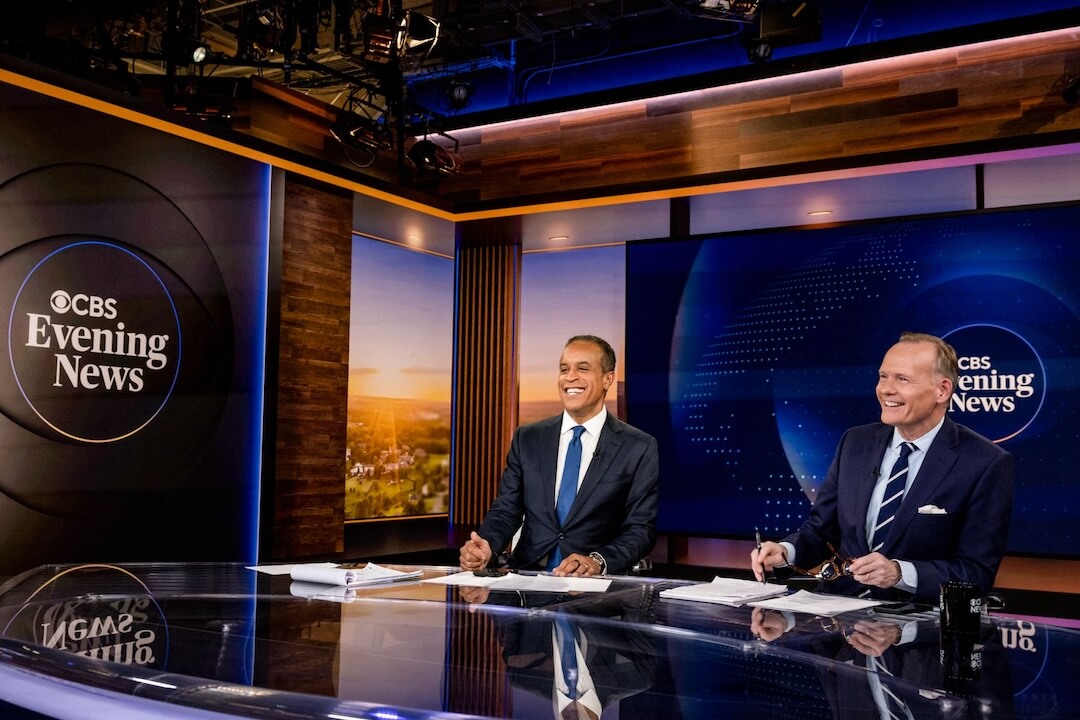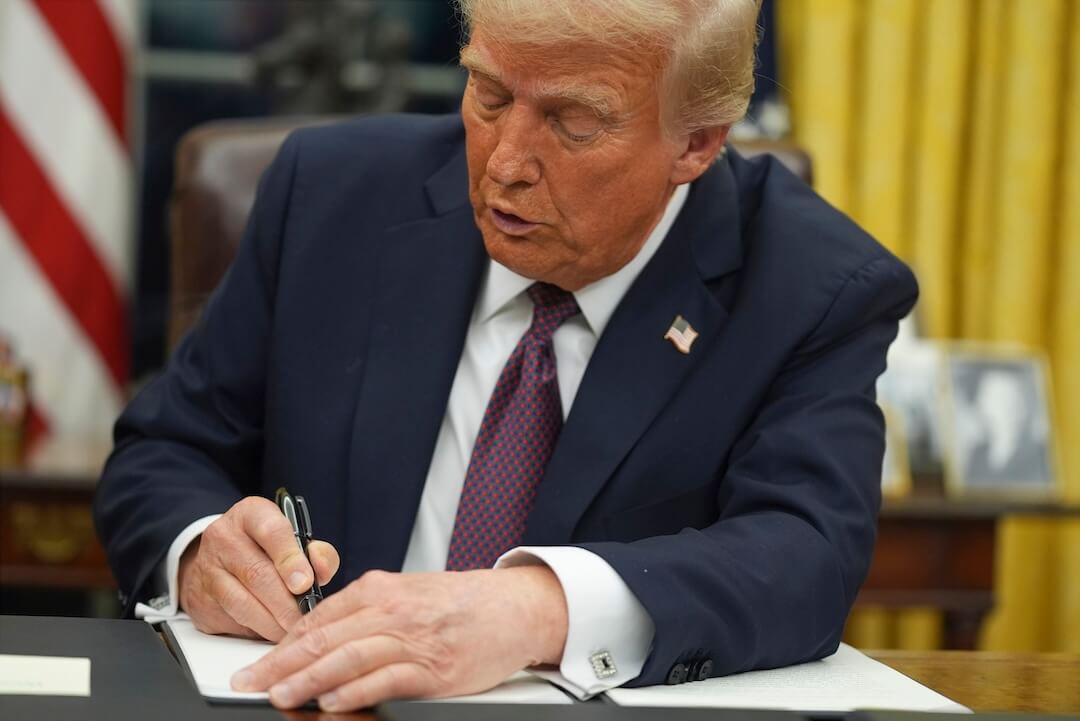 Covering COVID-19 is a daily Poynter briefing of story ideas about the coronavirus and other timely topics for journalists, written by senior faculty Al Tompkins. Sign up here to have it delivered to your inbox every weekday morning.
Covering COVID-19 is a daily Poynter briefing of story ideas about the coronavirus and other timely topics for journalists, written by senior faculty Al Tompkins. Sign up here to have it delivered to your inbox every weekday morning.
One thing I have learned after several decades in journalism is that when a headline writer writes a headline in the form of the question the answer is usually “no.” If the answer was “yes,” I would have written, “President Trump’s executive order will lower drug prices.” But in this case, we don’t know what this order will do.
President Donald Trump says his new order will “ensure” lower drug prices.
…and prices are coming down FAST! Also just ended all rebates to middlemen, further reducing prices.
— Donald J. Trump (@realDonaldTrump) September 13, 2020
What the president does not say is that this only applies to some Medicare drug prices and that it may never take effect at all. The Washington Post and others say it is another “toothless” order weeks before an election.
For starters, this issue is one of those strangely Trumpian things. He signed this order Sunday, requiring “most favored nation” status for drug pricing. But he had already signed an order to do that in July. As I reported, that one was never actually filed with the Federal Register. The White House said it would be in force in August, and that the White House would be meeting with drug manufacturers then.
During the Republican National Convention, speakers referred to this order as if it was already in place and lowering prices. It was not. The president told RNC delegates, “But the fact is that we signed a favored nations clause and a rebate clause, and your numbers are going to come down 60, 70%.”
Then, one day before House Speaker Nancy Pelosi and Senate Minority Leader Chuck Schumer launched a virtual “bus tour” called “Your Health, Your Vote, ” the president signed this new executive order.
The claim that this order or any executive order will lower drug prices 60 to 70% is, at best, uncertain.
The order says that drugs that are covered under Part B and Part D of Medicare have to be sold to the U.S. government at the lowest price that the drug is offered anywhere in the world. That is what is meant by “most-favored-nation” pricing. The order says:
It is the policy of the United States that the Medicare program should not pay more for costly Part B or Part D prescription drugs or biological products than the most-favored-nation price.
The “most-favored-nation price” shall mean the lowest price, after adjusting for volume and differences in national gross domestic product, for a pharmaceutical product that the drug manufacturer sells in a member country of the Organization for Economic Co-operation and Development (OECD) that has a comparable per-capita gross domestic product.
What is covered?
The order covers Medicare Part B and Part D drugs. The former does not affect a lot of people, the latter does. About 4 million Americans use Part B benefits, about 45 million people use Part D benefits. By comparison, 279 million Americans use neither one.
Part B drugs are medications that patients receive at their doctors’ offices, such as infused cancer drugs. Part B accounts for about 7% of total drug spending in America.
Generally, Part B drugs are drugs that Medicare recipients would not give themselves. They are often injectables. Think, for example, of end-stage renal medications, tube-feeding medications and drugs used in transplant procedures and clotting factors.
Then there are Part D medications. They are big. Part D drugs include blood pressure drugs, medications for depression, cholesterol, nerve pain and other common ailments.
What happens now?
The executive order only orders the secretary of Health and Human Services to build “demonstration projects” that would “test” how most-favored-nation pricing would work.
As the Post put it:
It’s unclear whether and when HHS might move forward on implementing the policy, which would involve a limited number of Medicare payments and could last only five years. The agency never proposed rules on it, despite Trump’s repeated promises, and the pharmaceutical industry is likely to sue.
Larry Levitt, executive vice president for health policy at the Kaiser Family Foundation, said, “President Trump’s executive order on drug pricing does not by itself do anything. It has to be followed up by regulations, which takes time.”
[the_ad id=”667826″]
Dear colleges, do NOT send infected students home
By the end of this week, pretty much every school that is going to allow students on campus will be up and running with new semesters. And Anthony S. Fauci, director of the National Institute of Allergy and Infectious Diseases, says when students test positive for the virus, sending them home amid COVID-19 outbreaks is “the worst thing you could do.” Schools that send students home may be exporting the virus to communities that are otherwise lightly infected.
But what are schools to do when they run out of quarantine space? The University of Tennessee, for example, removed students from one entire residence hall to turn the dorm into a quarantine center.
Athletes and COVID-related heart issues
Please note that this study published in JAMA Cardiology involves only 26 athletes at Ohio State University, but it found that one in six athletes (four of the people studied) who tested positive for COVID-19 later showed evidence of a heart inflammation that could be dangerous if the athlete returned to play. The inflammation is called myocarditis. The main outcome of this study is that we need more studies, but it does point out that COVID-19 has a lasting effect on some people.
Track political ad spending on Facebook (free training Wednesday)
Here is a cool new tool for you to track political ad spending on Facebook called the Ad Observatory, built by cybersecurity engineers at New York University. The tool compiles spending by candidates, campaigns, political action committees and dark money groups. It also provides information on ad topics, objectives and targeting information not available via the Facebook Ad Library.
Poynter is offering a free training session on how to use it on Wednesday, Sept. 16 at 2 p.m. Eastern. Sign up here.
[the_ad id=”667872″]
Schools are scrambling for substitute teachers
The Associated Press reported:
Several states have seen surges in educators filing for retirement or taking leaves of absence. The departures are straining staff in places that were dealing with shortages of teachers and substitutes even before the pandemic created an education crisis.
States saw more retirements than usual this summer. Now schools worry that they will be losing more teachers mid-term because of COVID-19 fears and general frustration over remote teaching.
The AP’s story looked at a number of states, from Indiana to Utah. It is pretty much the same situation everywhere.
Education leaders in states including Arizona, Kansas, New Hampshire, Pennsylvania and Texas have said they are bracing for worsening teacher shortages as the pandemic drives away some educators.
To try to maintain staffing levels in classrooms, the Missouri Board of Education made it easier to become a substitute teacher under an emergency rule. Instead of the previous requirement — 60 hours of college credit — eligible substitutes now only need to obtain a high school diploma, complete a 20-hour online training course and pass a background check.
Iowa responded similarly, relaxing coursework requirements and the minimum working age for newly hired substitutes.
In Connecticut, college students have been asked to step in as substitutes. Michele Femc-Bagwell, director of the teacher education program at the University of Connecticut, said the school has been getting requests to use fifth-year graduate students as substitute teachers. Heavy class loads and internship responsibilities, though, limit their availability to one day a week.
Many who work as substitutes are retired teachers such as 67-year-old Margaret Henderson, of Phoenix, who said she will not return as she had planned.
“Substitute teachers (are) going to be stepping into a classroom usually because somebody’s sick,” said Amanda von Moos, the co-founder and managing director of Substantial Classrooms, a national nonprofit focused on improving substitute teaching. “The biggest question on everybody’s mind — what I would call an unspoken question — is who is going to be comfortable stepping into that situation? And what would help somebody be comfortable stepping into that situation?”
EdWeek said older substitute teachers probably won’t be as available to step in but that states are making it increasingly easy to be a substitute teacher. Given the unemployment situation, even college students who are taking a break from school this fall could be qualified to work as a substitute teacher in some states. EdWeek reported:
Even before the pandemic, many districts reported difficulties finding enough substitutes to fill teacher vacancies. But this fall, the demand for substitute teachers has skyrocketed, said Nicola Soares, the president of Kelly Education, which partners with school districts across the country to provide staffing.
Some larger districts are asking Kelly Education to double or triple its pool sizes of substitute teachers, alongside temporary food and nutrition workers, school nurses, and secretarial staff, she said.
Even though some substitutes say they’re unwilling to go back, Soares said she thinks there will be enough people to fill the positions. The national average unemployment rate is just over 10%, and some of those workers might be interested in subbing. For instance, she said, someone who was laid off from a STEM career would be a “wonderful candidate” to teach a science or math class.
Also, Soares said, some graduating high school seniors or college students might want to take a gap year or a leave of absence from college, given the pandemic and the possibility of classes going online. Those people could serve as substitute teachers for a year, she said. About half of states, including Florida and Georgia, only require substitutes to have a high school diploma, according to Kelly Education’s data.
Some states and especially municipal school systems have been raising the per diem pay for substitute teachers. Study.com said:
Top-paying states for substitute teachers include Hawaii, Alaska, Oregon, and California, with average salaries ranging between $40,000-$46,000 per year. Metropolitan areas tend to offer substitutes a slightly higher average salary than non-metropolitan locations. For instance, in the metropolitan area of San Jose, California, the annual mean wage for a substitute teacher is $44,670, while in the more rural North Valley region of California, the average salary is $40,870.
The Bureau of Labor Statistics’ latest national figures are from 2017, so you may want to check with your state department of education to see if they have something more recent. Your local school systems will certainly have new figures based on the COVID-19 marketplace, but at least these charts will give you an idea of which states rely more on substitutes and therefore have to pay more.

(From the Bureau of Labor Statistics)

(From the Bureau of Labor Statistics)

(From the Bureau of Labor Statistics)
The Substitute Teaching Institute lists the patchwork of requirements for substitute teachers:
27 states (Alaska, Arizona, Colorado, Delaware, Hawaii, Illinois, Indiana, Iowa, Kansas, Kentucky, Michigan, Minnesota, Mississippi, Missouri, Nebraska, Nevada, New Mexico, North Dakota, Ohio, Oklahoma, Oregon, Pennsylvania, Rhode Island, Washington, West Virginia, Wisconsin and Wyoming) and D.C. offer some sort of license, permit, authorization, or certificate for substitute teachers. A few states offer more than a single type of substitute permit, which varies according to the minimum education requirements.
19 states (Arizona, California, Connecticut, Delaware, Hawaii, Iowa, Kansas, Kentucky, Minnesota, Mississippi, Nebraska, North Dakota, Ohio, Oregon, Pennsylvania, Rhode Island, Washington, West Virginia and Wisconsin) and D.C. note that a bachelor’s degree is needed — but also offer waivers or ways to get around the requirement. States that do not require a college degree sometimes specify a minimum number of college credit hours.
6 states (Alabama, Colorado, New Mexico, Utah, Vermont and Virginia) specifically note that a high school diploma (or its equivalent) is required.
17 states (Alabama, Arizona, California, Hawaii, Idaho, Indiana, Maine, Michigan, Missouri, Nebraska, Nevada, New Mexico, North Dakota, Pennsylvania, Virginia, West Virginia and Wyoming) plus D.C. mandate that applicants pass a criminal background and/or fingerprint check.
4 states (Hawaii, Virginia, West Virginia and Wisconsin) require some minimal training or orientation.
Rhode Island requires districts to advertise for certified substitute teachers.
Wyoming says those wishing to earn a substitute teacher permit must take a U.S./Wyoming constitution or equivalency test.
New Mexico says substitute teachers must be 18 years of age to work in a K-8 environment and 21 years of age for grades 9-12; Virginia says that 18 is the minimum age but that age 21 is preferred.
We’ll be back tomorrow with a new edition of Covering COVID-19. Sign up here to get it delivered right to your inbox.
[the_ad id=”667878″]
Al Tompkins is senior faculty at Poynter. He can be reached at atompkins@poynter.org or on Twitter, @atompkins.







